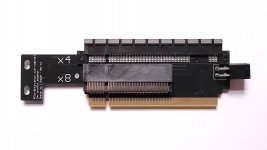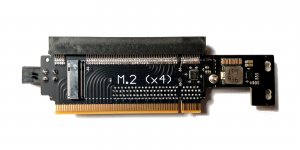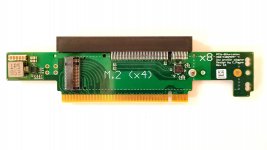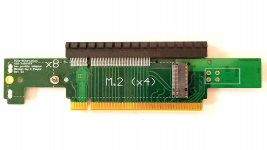I have a single PCIe 3 x16 slot currently occupied by an LSI 9311-8i HBA. The HBA takes 8 lanes, and I'd like to see whether I can somehow have a splitter card (if that's something that exists, or if that's the correct name for it) that can occupy a full PCIe x16 slot, but expose two additional x8 slots. One of the smaller slots should accept the HBA, while the other one - maybe a PCIe x8 to two M.2 NVMe slots adapter? So that I can use a couple of NVMe SSDs for ZIL/SLOG or a dedicated pool for Git repos.
Is that doable? According to the mobo's manual (ASRock Rack X570D4I-2T), and its UEFI setup, the x16 slot can be configured in 3 modes: single x16, x8x8, and x8x4x4.
(I gotta be honest, this might be more like a how do I google request, because when I search online, I don't get any satisfactory results; yet the mobo's ability to split PCIe lanes makes me think there's enough demand to implement such a feature, so I might be phrasing my search queries incorrectly )
Is that doable? According to the mobo's manual (ASRock Rack X570D4I-2T), and its UEFI setup, the x16 slot can be configured in 3 modes: single x16, x8x8, and x8x4x4.
(I gotta be honest, this might be more like a how do I google request, because when I search online, I don't get any satisfactory results; yet the mobo's ability to split PCIe lanes makes me think there's enough demand to implement such a feature, so I might be phrasing my search queries incorrectly )






